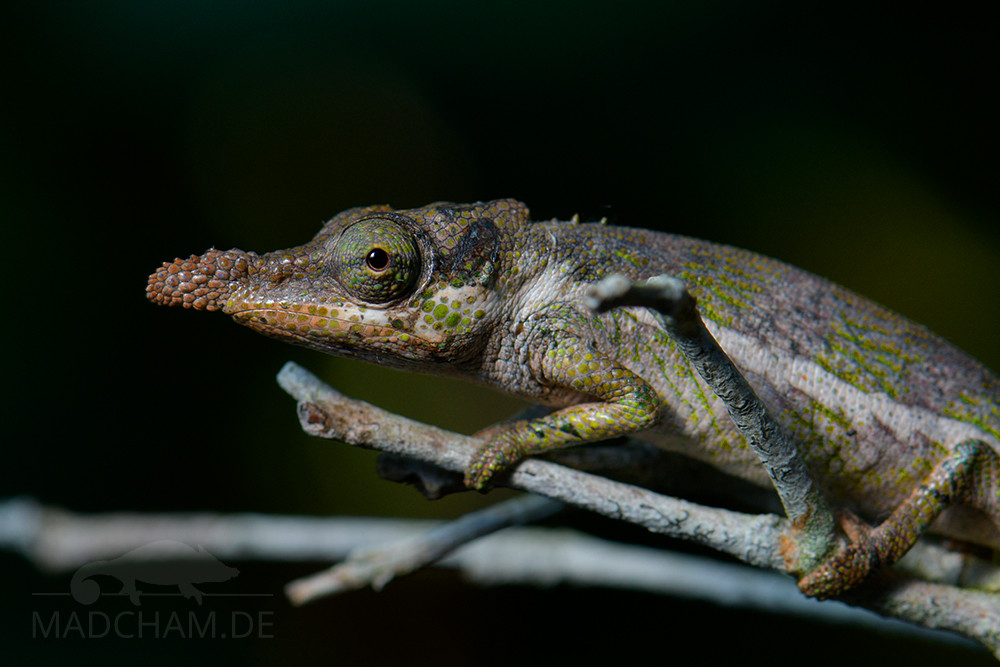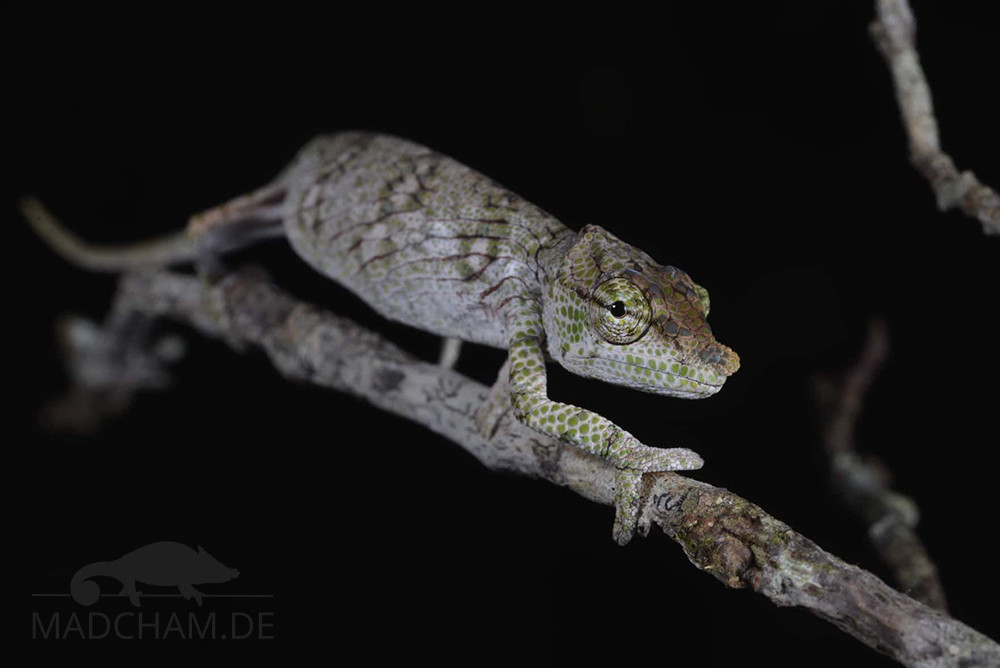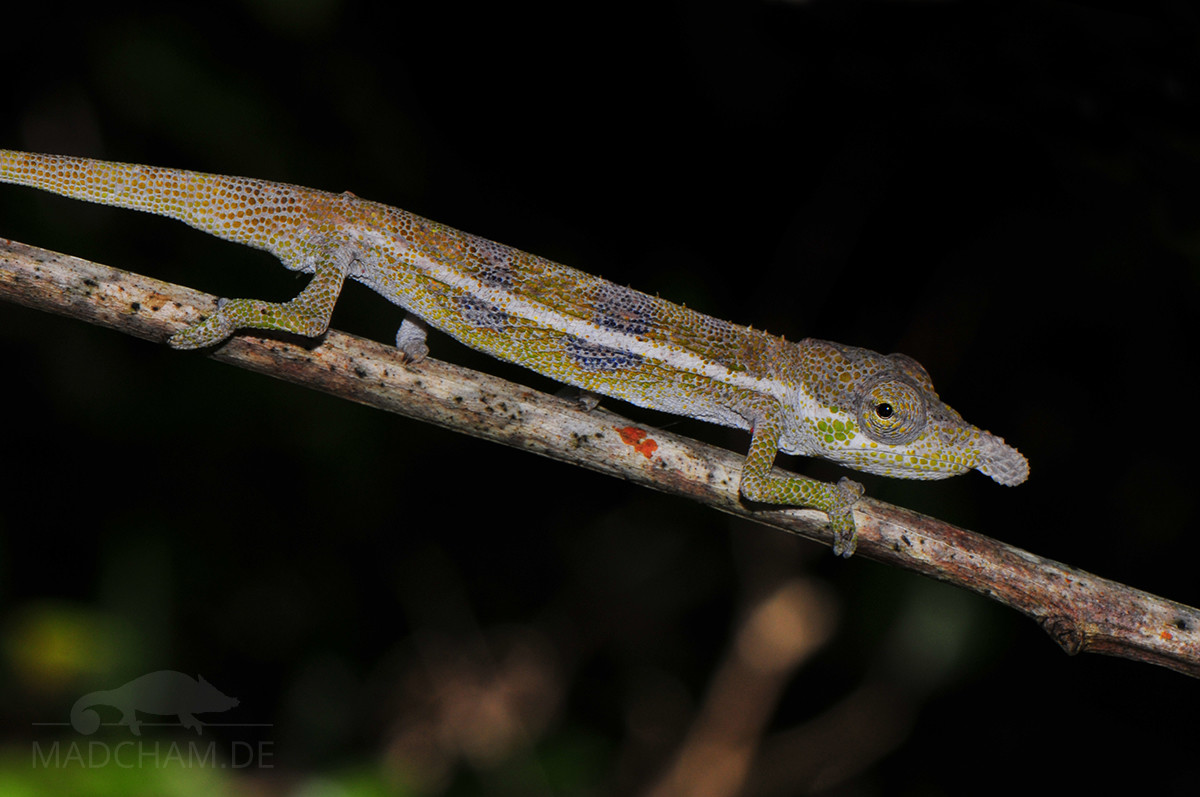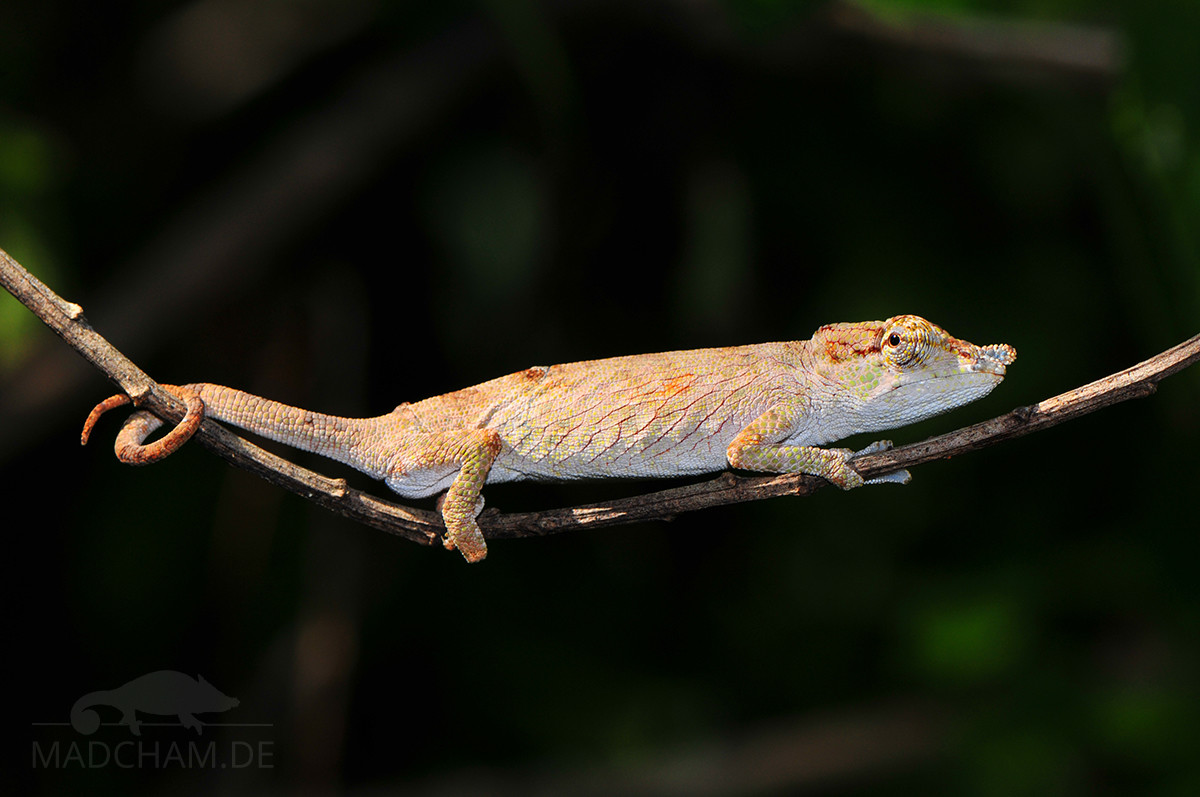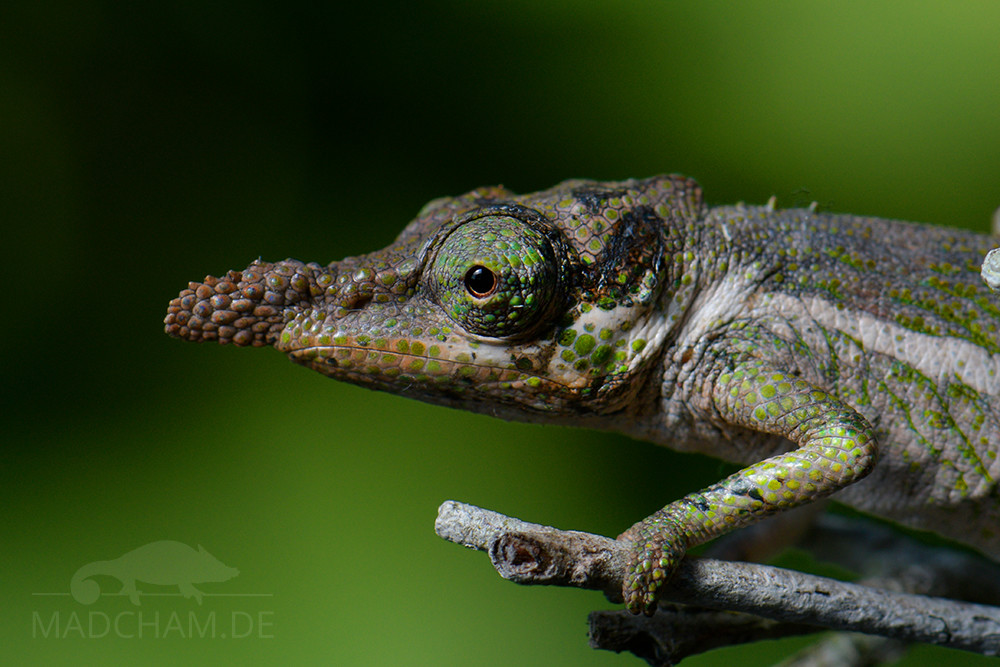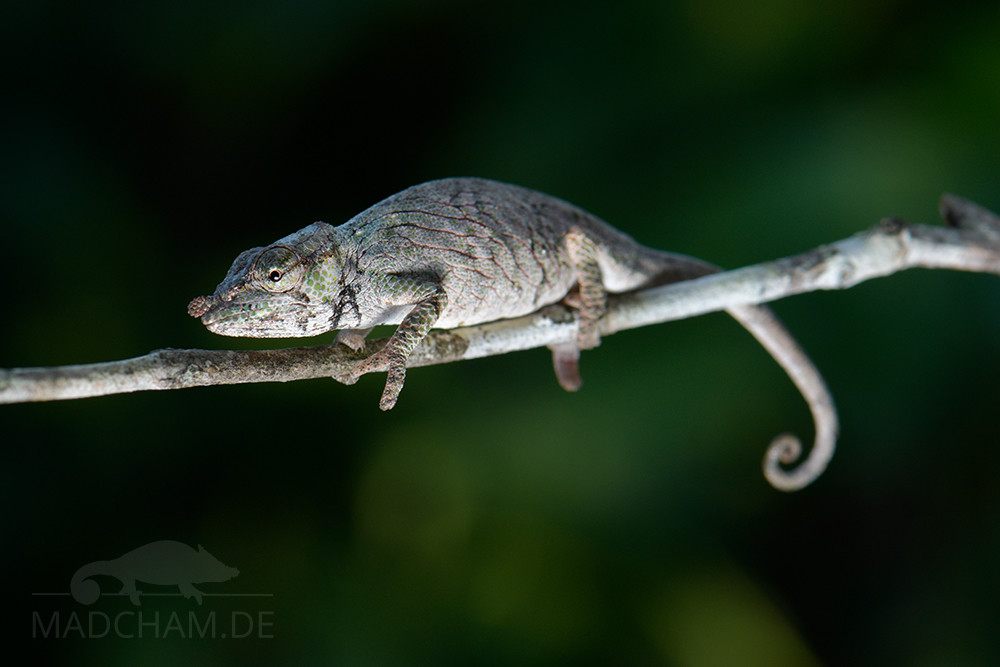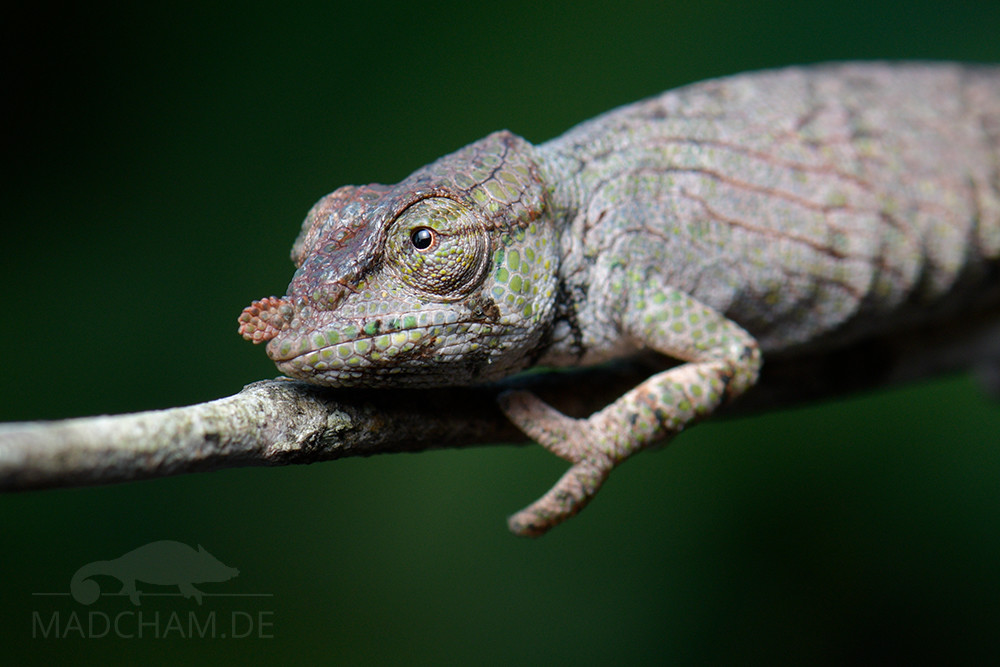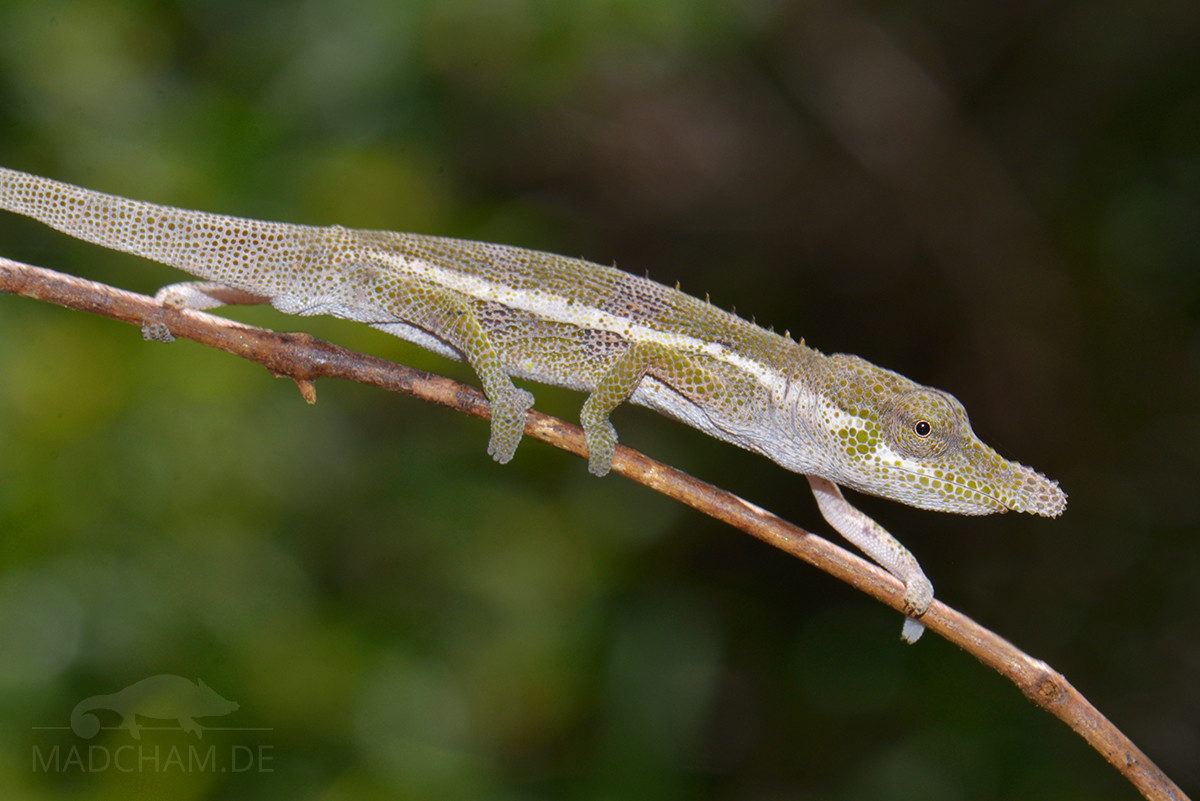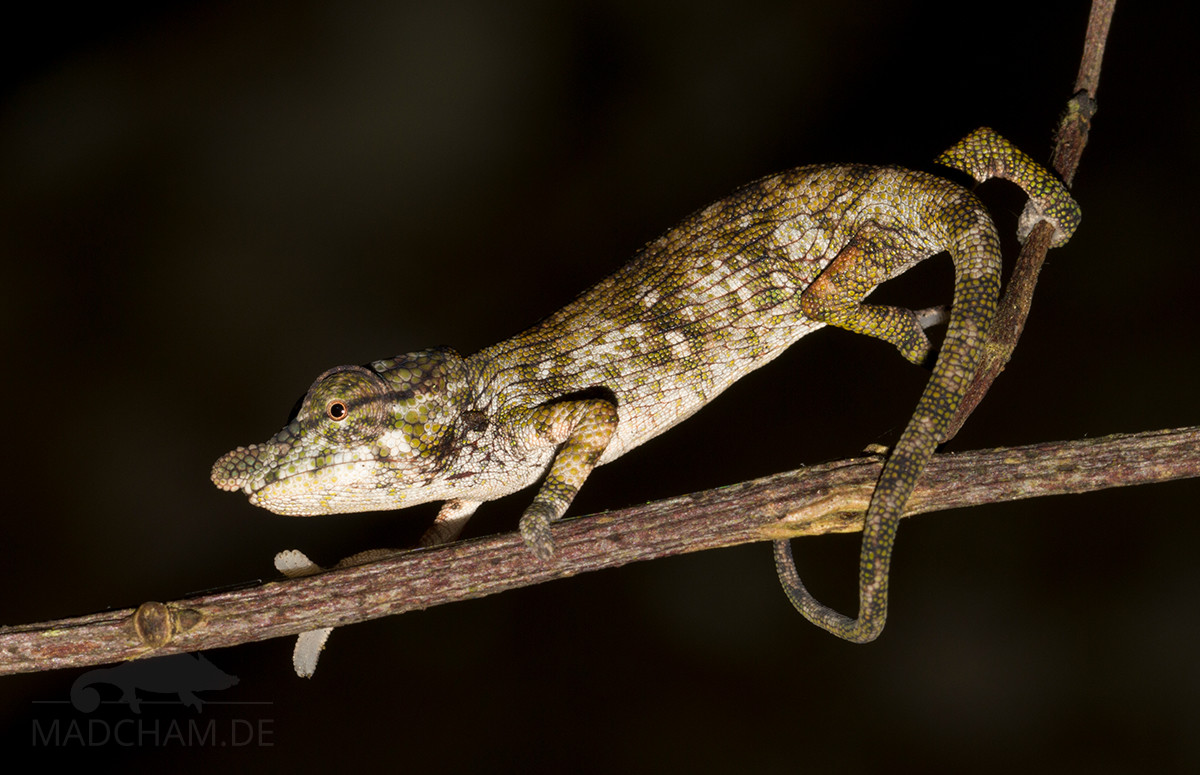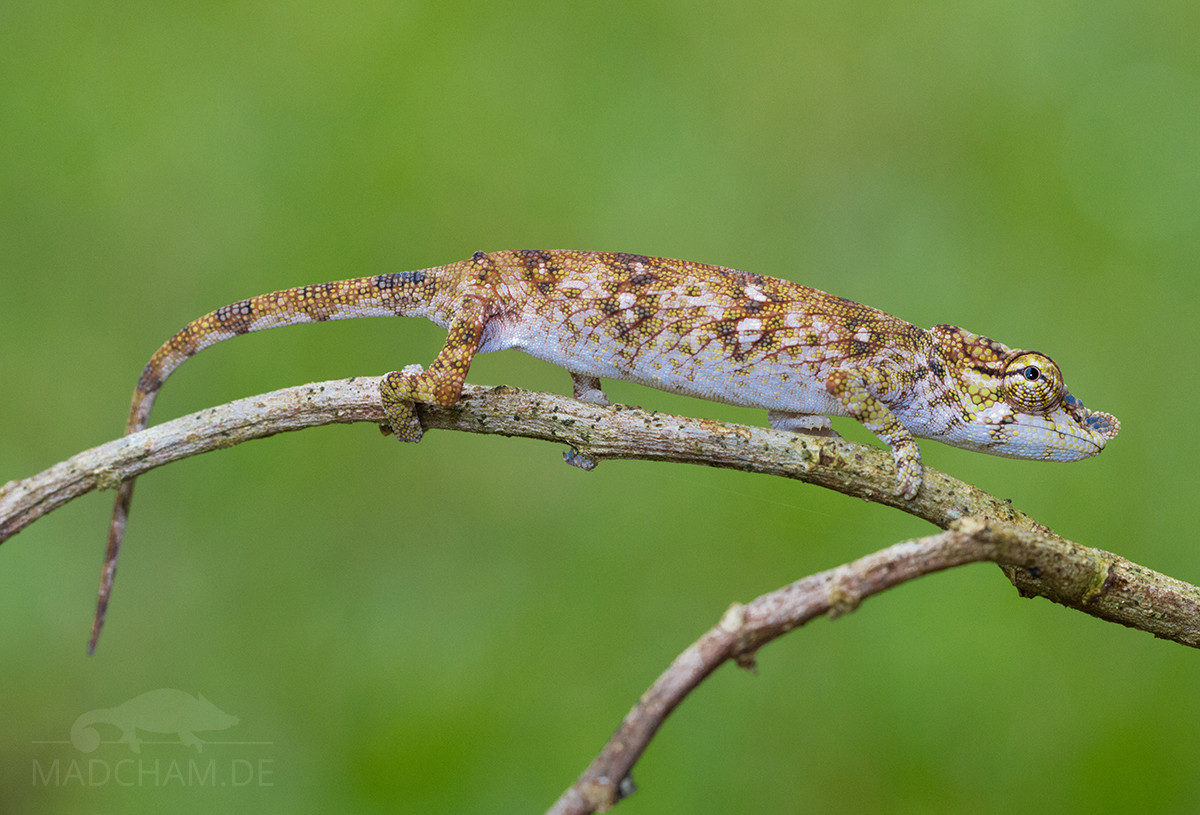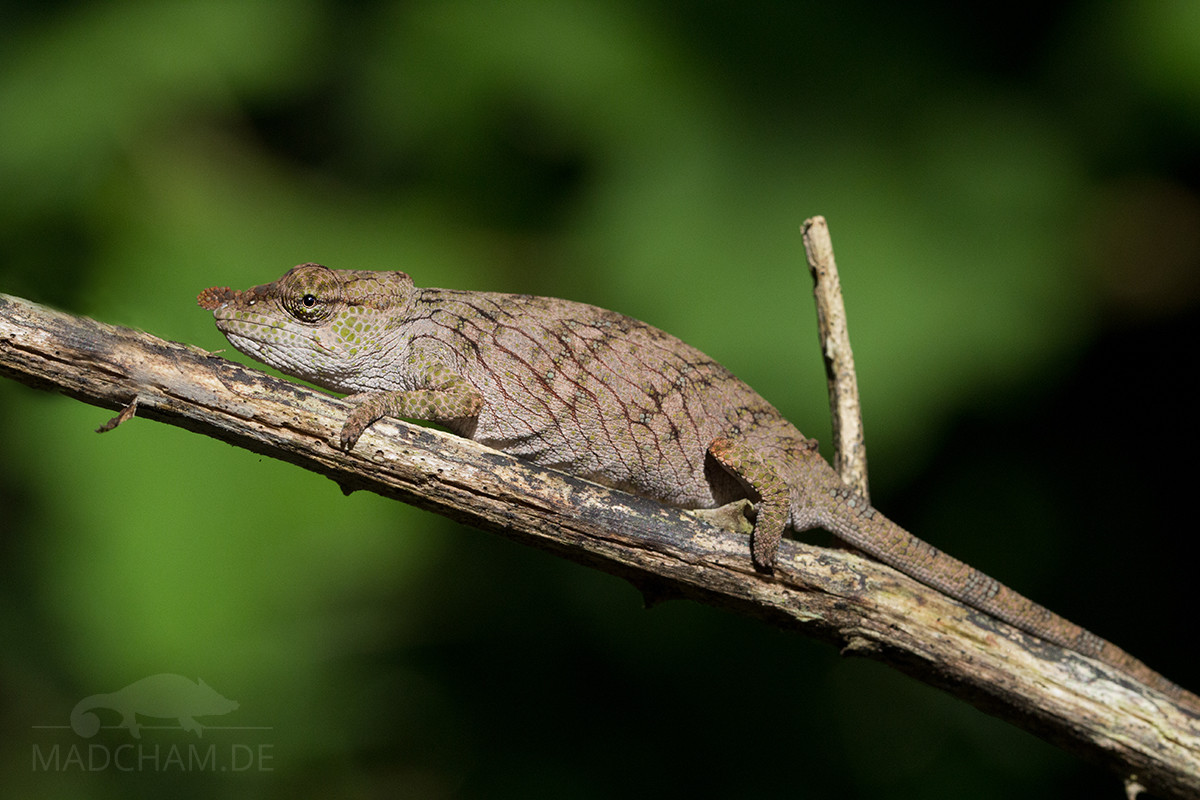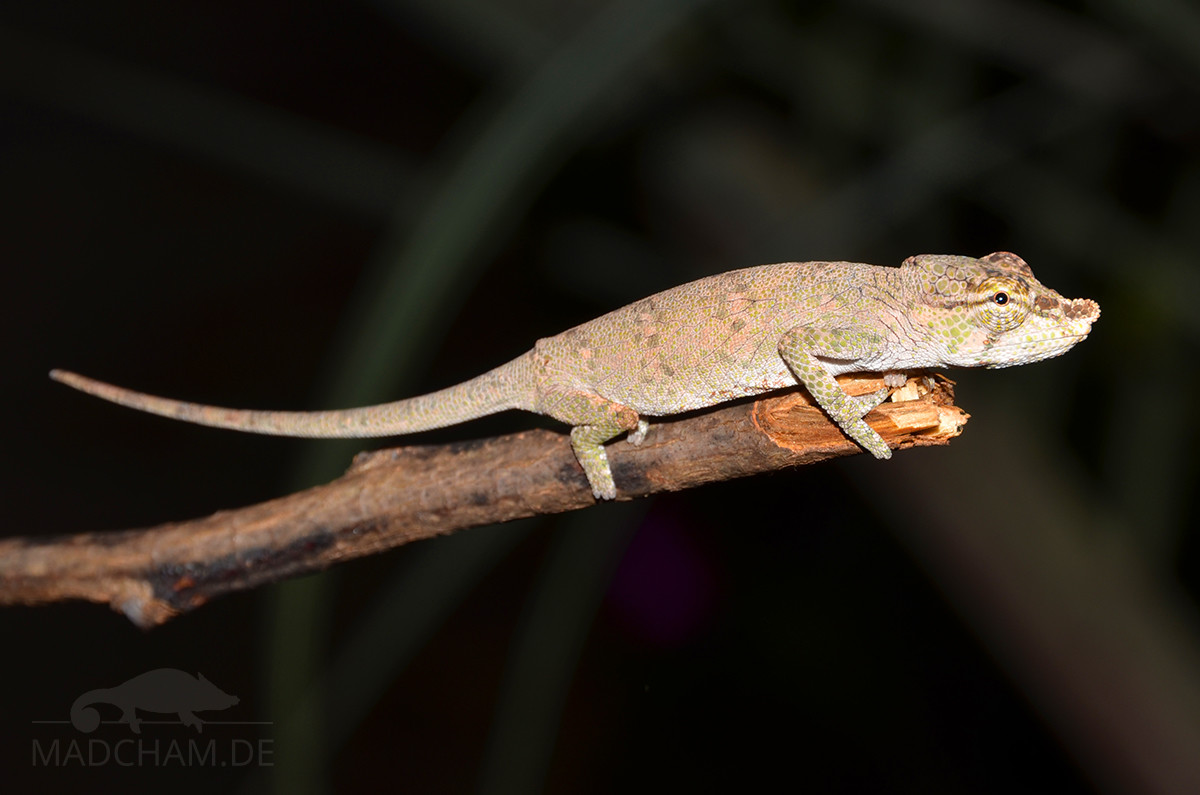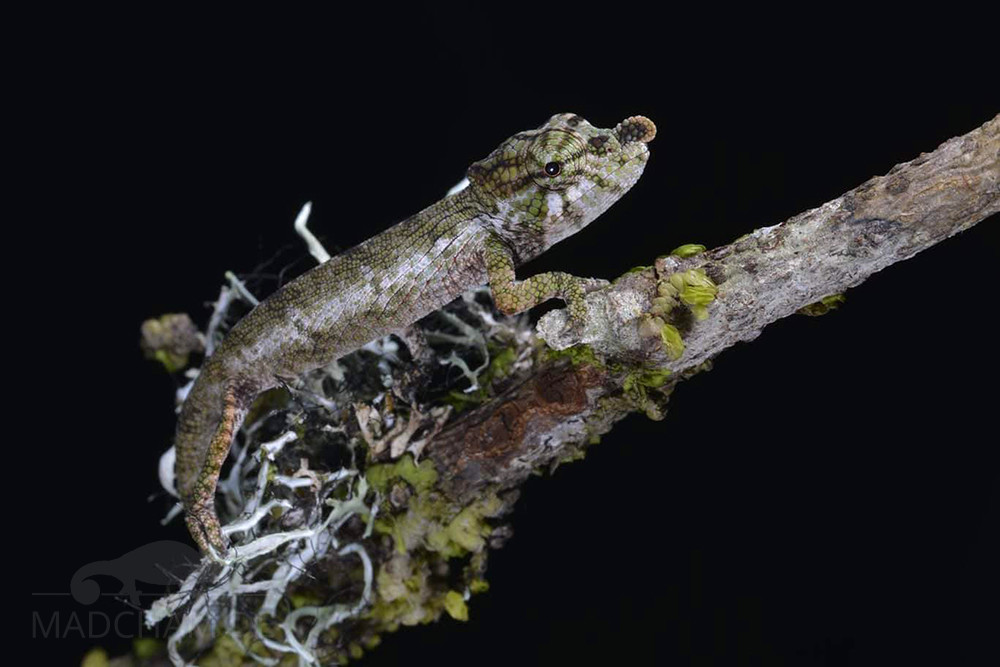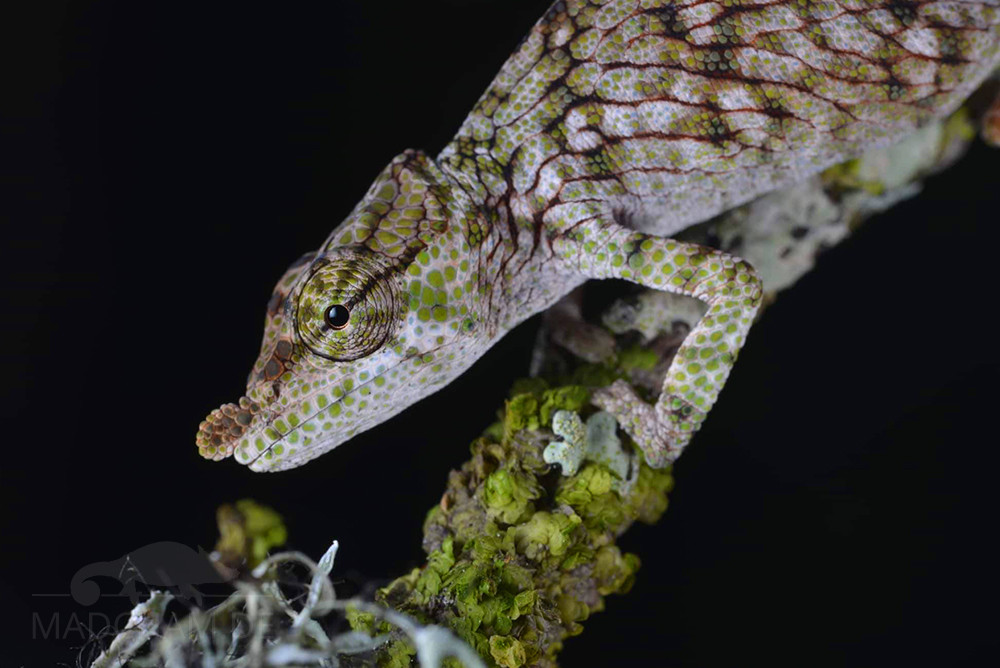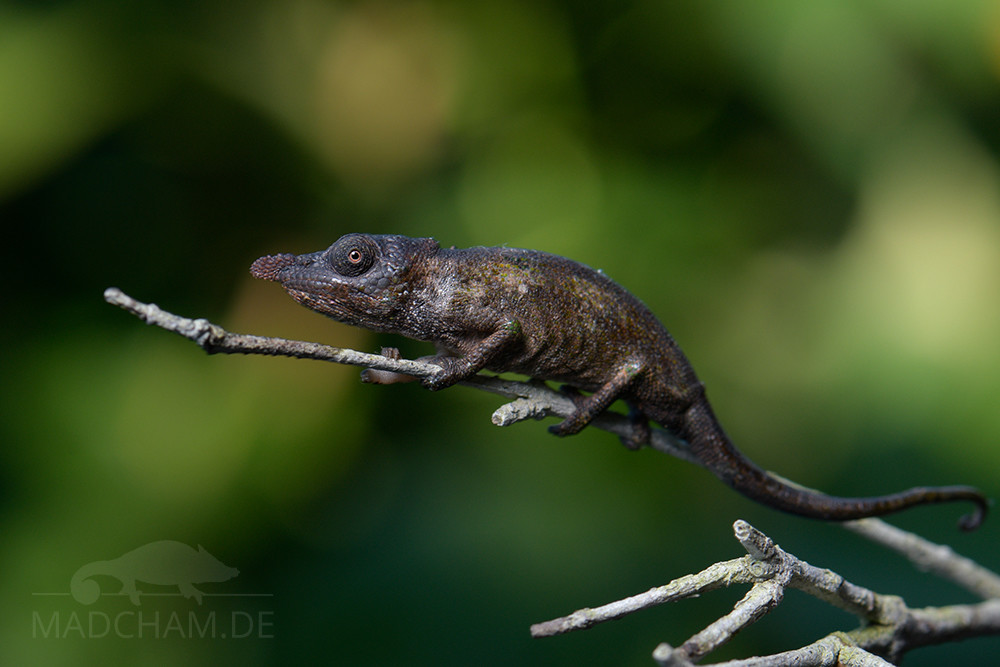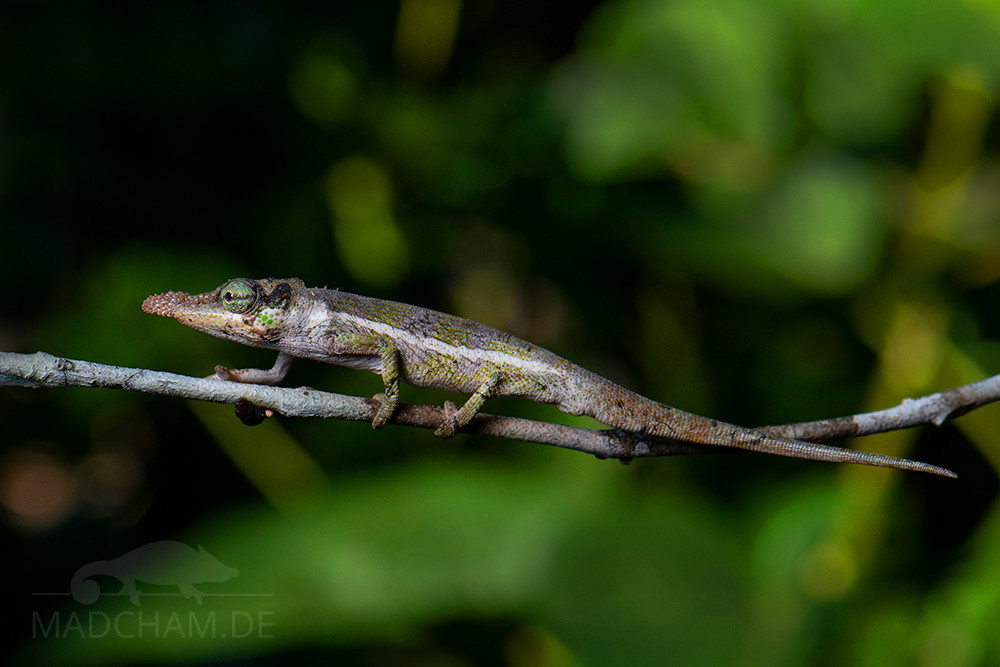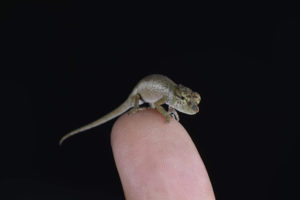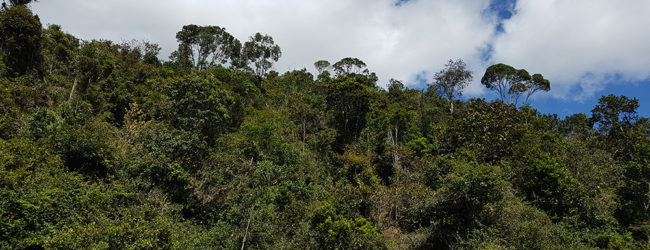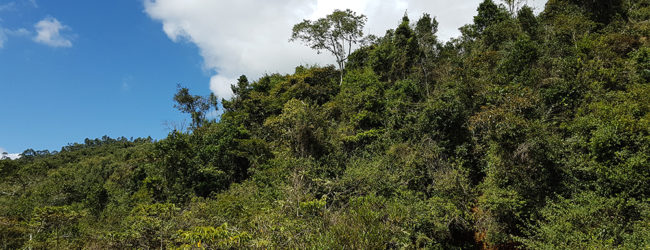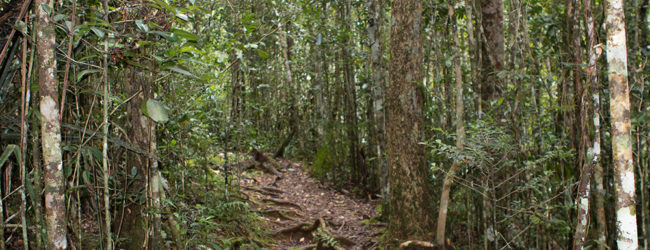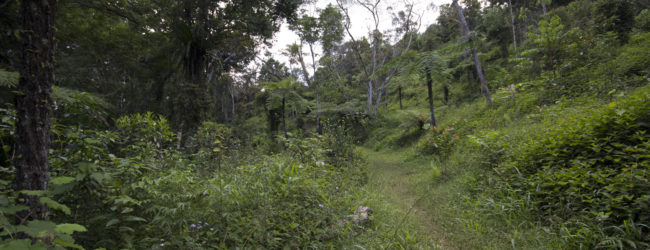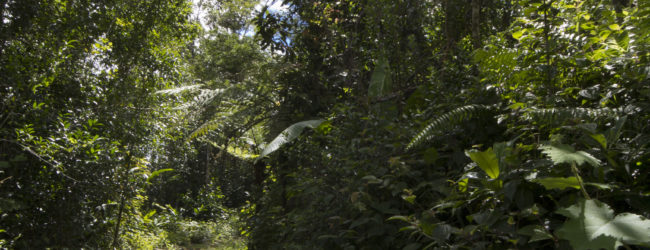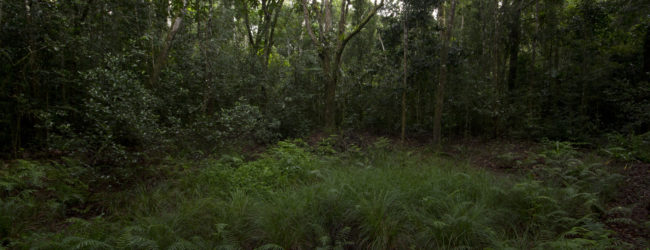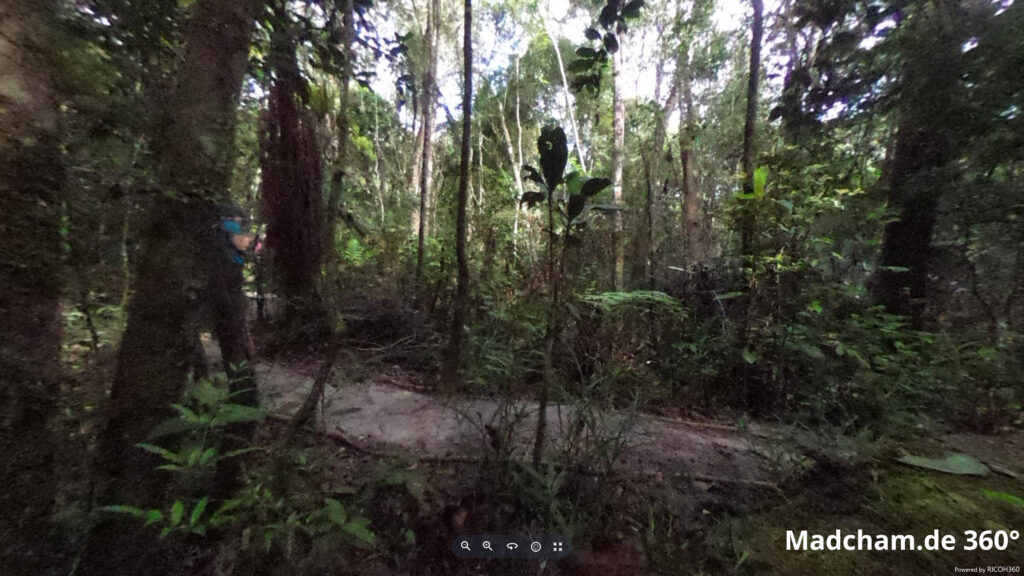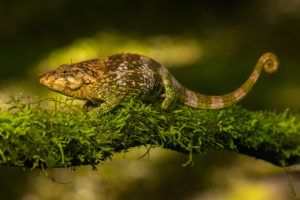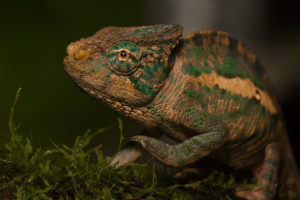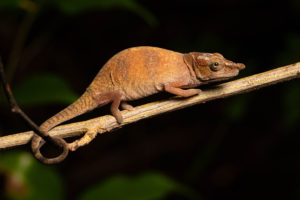no legal export possible
First description:
Prötzel, Scherz, Ratsoavina, Vences & Glaw, 2020 ![]()
Origin of the species name:
David Prötzel, Mark D. Scherz and Frank Glaw from the State Zoological Collection Munich (Germany), Fanomezana M. Ratsoavina from the University of Antananarivo (Madagascar) as well as Miguel Vences from the Zoological Institute of the TU Braunschweig (Germany) named the species at the request of the Indonesian Wewin Tjiasmanto after its mother, Emelina Widjojo. Tjiasmanto had taken on the sponsorship of a chameleon species through the BIOPAT project. The respective sponsor pays from 2600 € upwards for a sponsorship. The money is used exclusively to support scientific research projects. In return, the sponsor is allowed to give a newly discovered plant or animal species of a name of his or her choice.
Distribution:
Calumma emelinae is known from various remnants of rainforest on the east coast of Madagascar, which are more than 750 m above sea level. The previous sites are located between Anosibe an’Ala in the central-east and Lake Alaotra, one of the most important rice-growing areas. So far we have always found the species in a small forest near Moramanga and very frequently in Andasibe and Vohimana. In fact, after reviewing our photos of the last years, Calumma emelinae occurs in the most famous national park of Madagascar, Andasibe-Mantadia, by far more often than Calumma nasutum, which was confused with this species for a long time until now. Another population of Calumma emelinae lives in the region of the Makira Plateau in northern Madagascar. Since it is largely inaccessible to travelers, there are hardly any photographs of it so far.
Look and size:
Calumma emelinae does not grow very large. With only 8.3 to 10.3 cm from nose to tail tip, this species is already fully grown. Both sexes have a round nose appendage, which is smaller in females than in males. The rostral scale directly under the nose is not integrated into the rostral appendage itself in Calumma emelinae. In males, the casque is very low (only 0.5-1.1 mm), and the dorsal crest varies in the number of spines. The females do not wear a dorsal crest. The males of Calumma emelinae are prettier in color than the females: The females are grey-white with light green spots, which makes especially arms, legs and head look very green. The rostral appendage of females may have some light blue scales.
| Jan | Feb | Mar | Apr | May | Jun | Jul | Aug | Sep | Oct | Nov | Dec | |
| Average temperature | 23 | 24 | 23 | 23 | 22 | 19 | 19 | 19 | 20 | 21 | 22 | 23 |
| Minimum temperature | 20 | 20 | 20 | 19 | 18 | 15 | 15 | 15 | 15 | 16 | 18 | 19 |
| Maximum temperature | 27 | 27 | 27 | 27 | 25 | 23 | 23 | 23 | 24 | 25 | 26 | 27 |
| Rain days | 27 | 24 | 26 | 19 | 17 | 18 | 21 | 20 | 15 | 16 | 20 | 25 |
We have collected the data given above over several years with thermometers and hygrometers at the finding places of the chameleons. "Average temperature" means that values of a whole month have been calculated to one average value per month. For example all measured minimum temperature values of February have been calculated to one average minimum temperature for February. In plain language, this means single peak values of a day may be a little higher or lower than the average minimum and maximum temperatures. It is possible that a location has an average maximum temperature of 29°C, but one day during that month it had 33°C or even 35°C there.
Three examples of a daily course of temperatures in Andasibe in the rainy season can be found below. Both were recorded with data loggers in 2023.
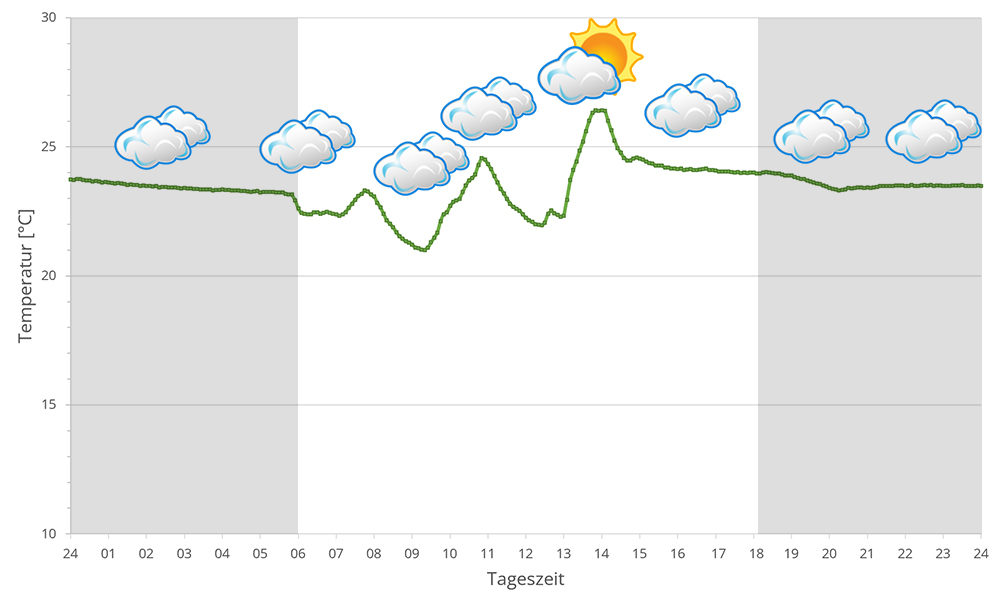
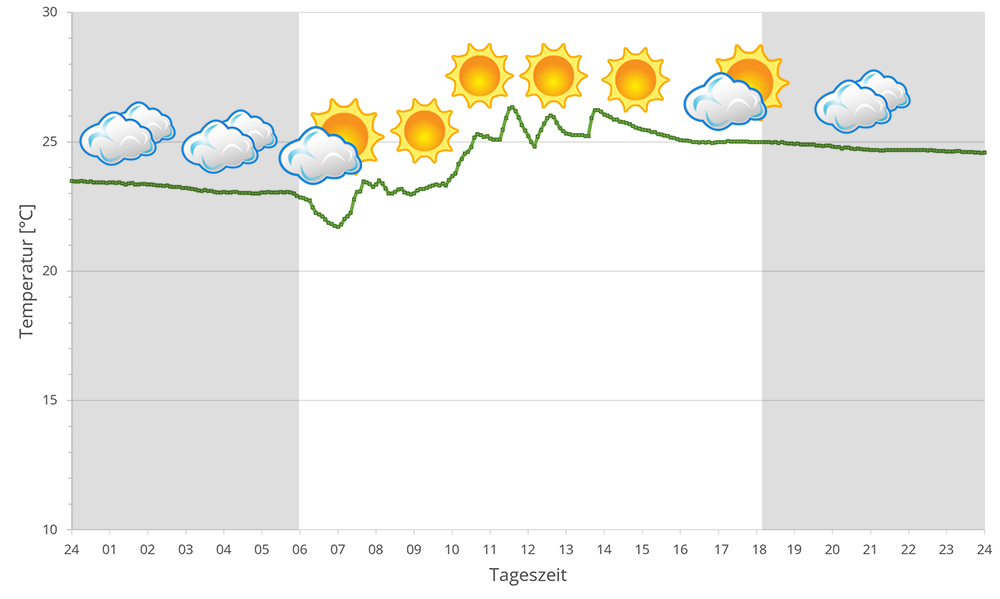
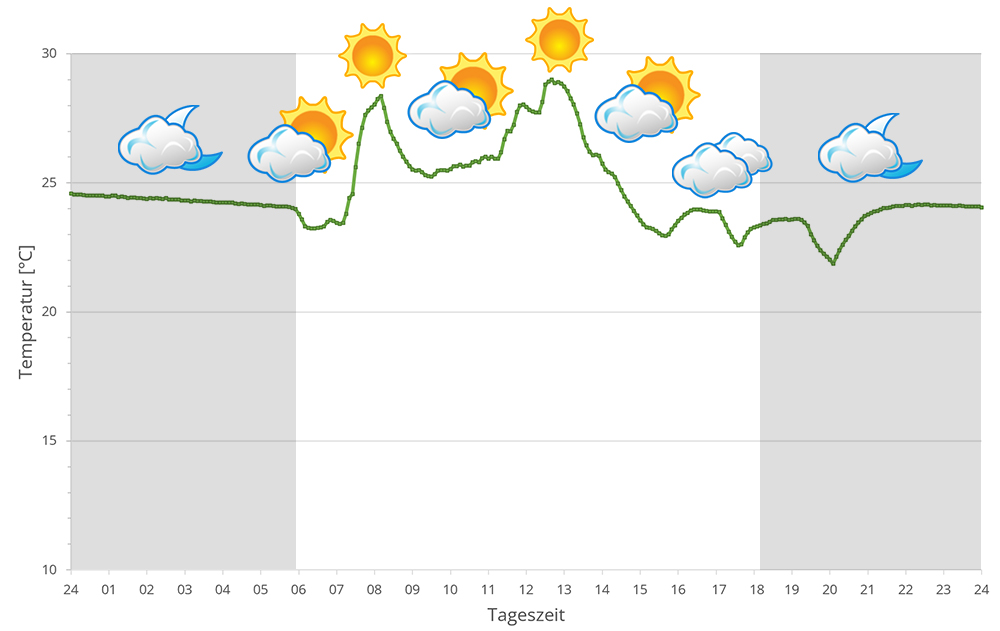
The region around Andasibe with the associated forests of Mantadia, Mitsinjo and Analamazaotra lie in the eastern highlands of Madagascar at altitudes between 900 and 1250 m above sea level. During the day, the temperature may sometimes exceed 25°C, but the thermometer rarely climbs above 30°C, or only in sunspots. At night, temperatures plummet, especially during the dry season. 10° to 15° degrees are the rule.
Humidity in the rainforests around Andasibe is high all year round. During the rainy season it rains extensively every day, sometimes the rain lasts for days. But the dry season is not massively different either, except that it has slightly cooler temperatures overall and reaches lower temperatures at night. It still rains at least every other day. Rain, high humidity and a drop in temperature at night are therefore the central points of Andasibe's climate. In 2023, we measured relative humidity with data loggers on different days in Andasibe in the rainy season, the data can be found below.
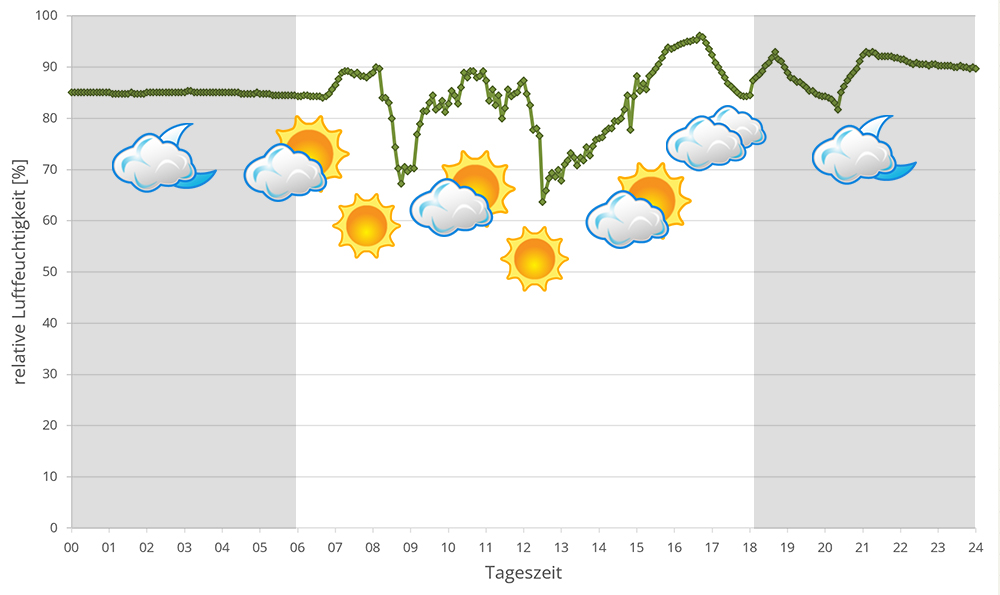
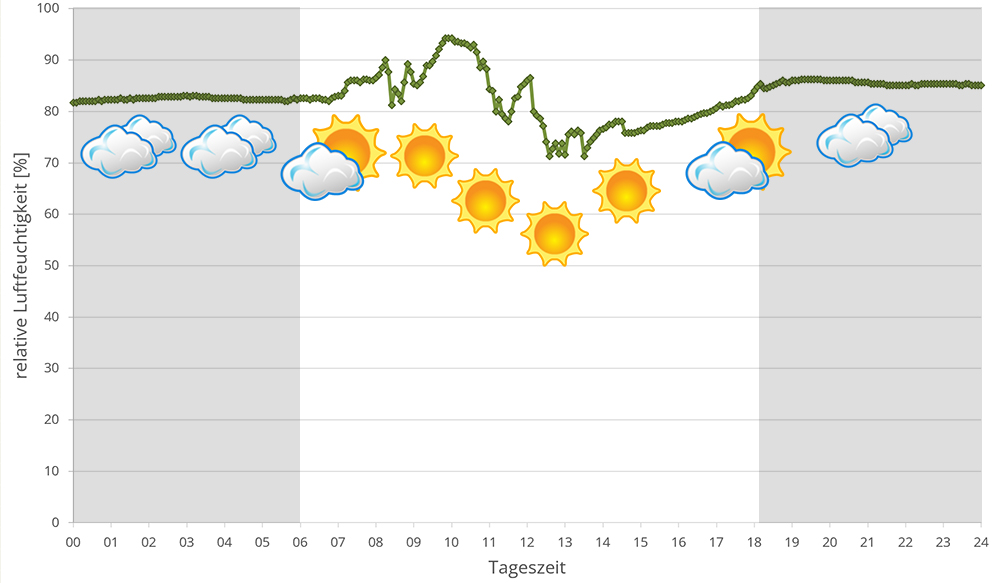
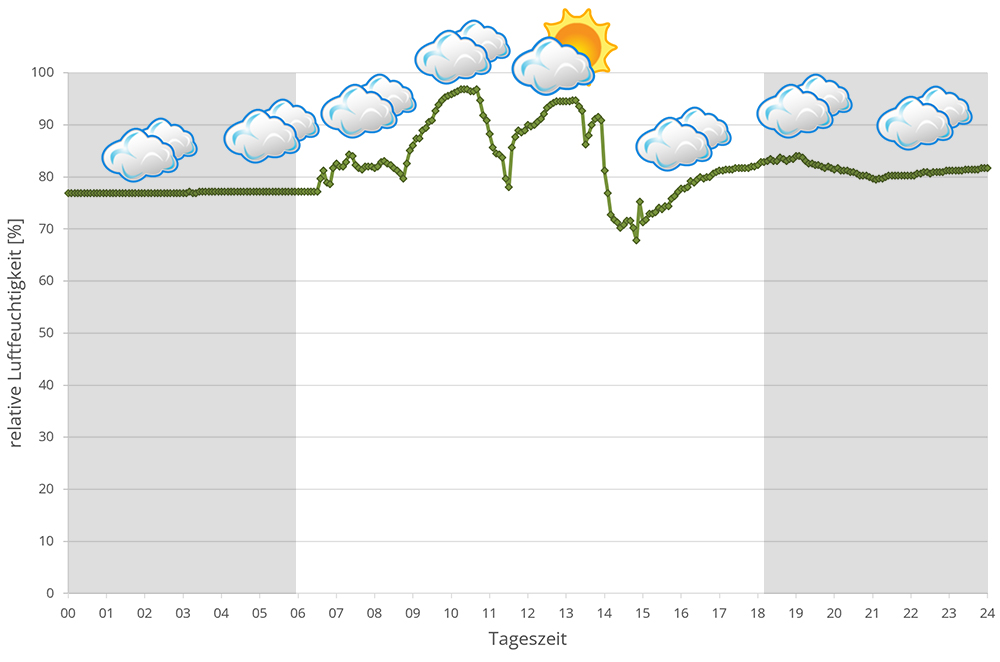
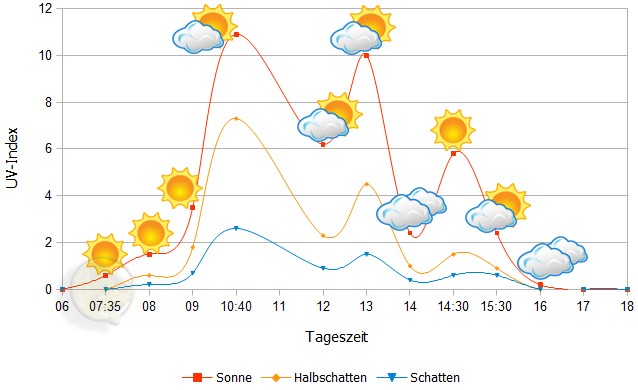
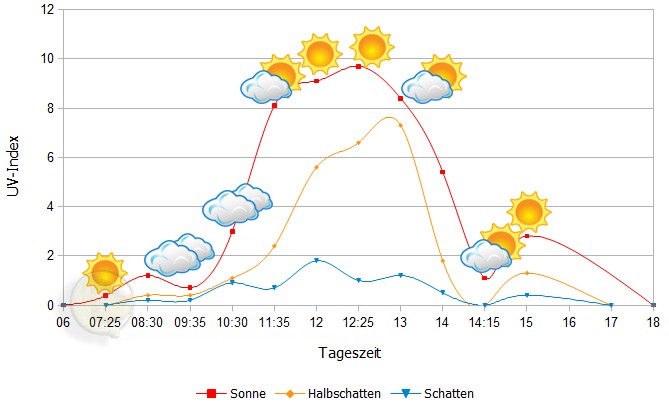 Tageszeit = day time, Sonne = sun, Halbschatten = half shade, Schatten = shade
Tageszeit = day time, Sonne = sun, Halbschatten = half shade, Schatten = shade
We have measured UVB data with a Solarmeter 6.5 in spring (March, April) at the peak of activity of chameleons in Madagascar. We always measured the values that a chameleon could maximally reach in its habitat.
| Jan | Feb | Mar | Apr | May | Jun | Jul | Aug | Sep | Oct | Nov | Dec | |
| Morning | 23,2 | 23,4 | 22,0 | 22,1 | 20,5 | 16,0 | 16,3 | 16,5 | 17,4 | 16,7 | 21,2 | - |
| Midday | 25,4 | 25,3 | 24,5 | 22,5 | 20,2 | 16,5 | 16,3 | 17,7 | 18,3 | 18,0 | 21,4 | - |
| Evening | 25,5 | 25,1 | 25,0 | 25,3 | 20,8 | 17,2 | 16,1 | 17,0 | 19,6 | 23,0 | 22,0 | - |
Between 21 March 2018 and 05 February 2019, we measured ground temperatures in the rainforest of Andasibe and surrounding areas (Analamazaotra, Andasibe, V.O.I.M.M.A. and Mitsinjo) about every other day - the table is the result of these measurements. Only in December no measurements were taken. detailed review can be found here. In total, we took 418 soil temperature measurements and measured an estimated 70 different locations in Andasibe and the surrounding area at a depth of 20 cm.
In 2023, in addition to other climate data, we also measured the air pressure at the locations we visited in Madagascar. The following data is from different days during the rainy season in Andasibe. On the X-axis is the time of day or night. In Madagascar, the day begins around 6 am, and night falls at 6 pm. The Y-axis shows the atmospheric pressure in hPa.
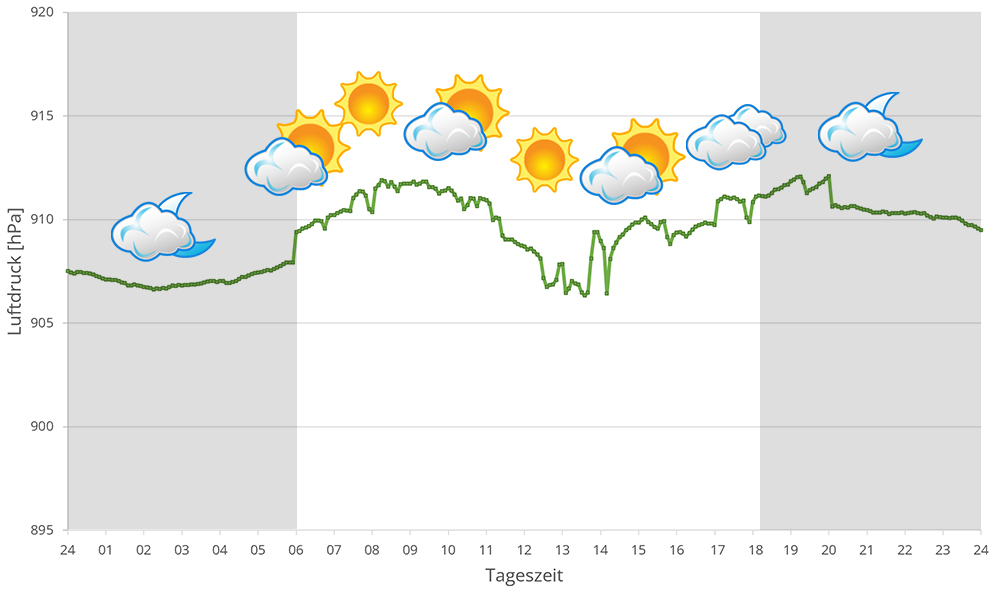
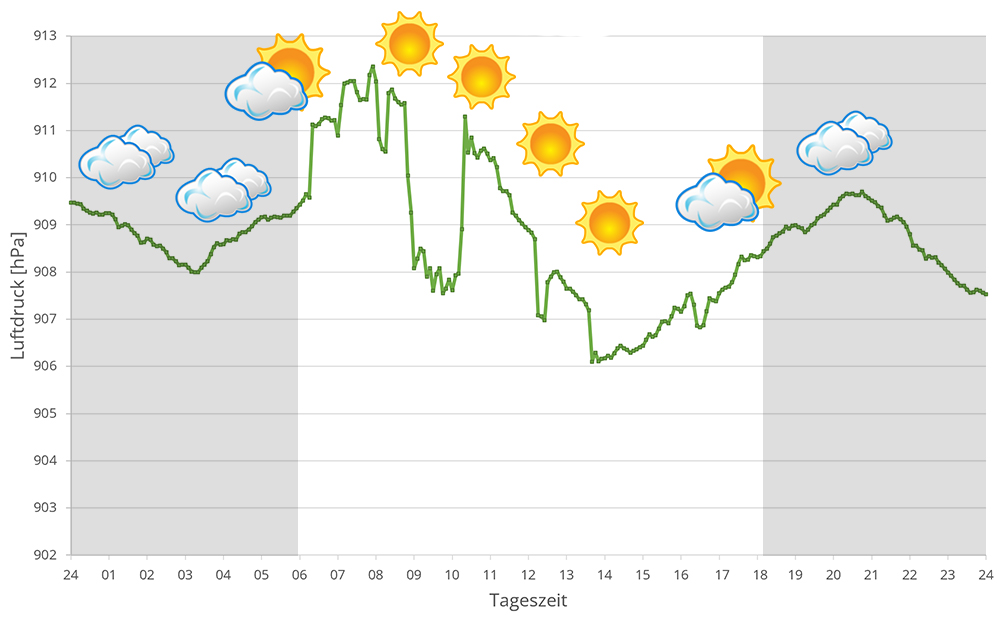
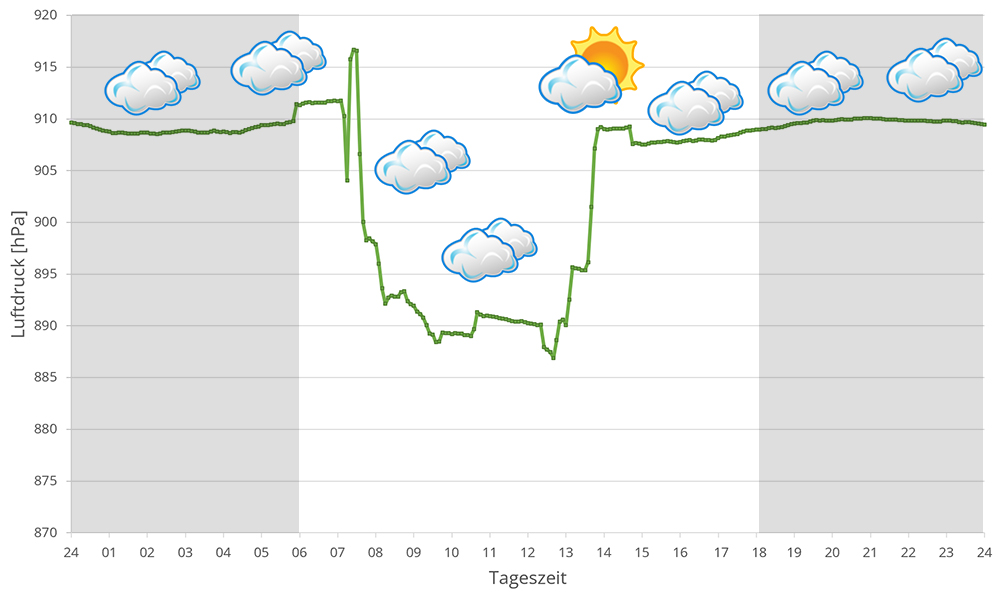
Habitat:
The following photos show sections of Calumma emelinae habitat during the rainy season near Moramanga. This is a tiny fragment of the rainforest, almost entirely adjacent to secondary vegetation and very much threatened by deforestation. However, the chameleons live only within the intact forest and are not found outside on the edges of rice fields or the like. Calumma emelinae hides very well in dense bushes and likes to live high up in the trees. The remaining photos show sections of the species’ habitat in the Analamazaotra rainforest.
Below you will find some 360° images from the rainforests of Analamazaotra that we took during the rainy season. If you click on the respective image, the pictures will open in an enlarged view in a separate window. You can use the mouse to rotate in all directions. You also have the option of running the images in full-screen mode. Have fun looking at them!

